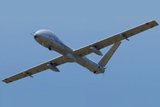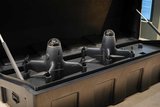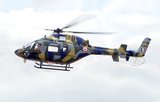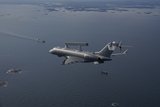Raytheon and Northrop Grumman awarded follow-on contract for hypersonic systems
Raytheon and Northrop Grumman has won a contract to further develop HAWC. (Image: Raytheon)
Raytheon, an RTX company, and Northrop Grumman have been awarded a contract to develop further its Hypersonic Air-breathing Weapon Concept (HAWC) flight vehicle, incorporating manufacturing improvements and conducting flight tests to expand its operating envelope while validating system performance models.
The two companies have been working on the system since 2019, when they signed a teaming agreement to develop, produce and integrate Northrop Grumman's scramjet engines onto Raytheon's air-breathing hypersonic weapons.
In September 2022, the two companies were handed a $985 million contract to develop HACM further.
Related Articles
US lays out plans to speed up hypersonic weapons development
HAWC makes strides with further flight tests planned
US hails HAWC test but still plays catch-up on hypersonics
The new contract with DARPA will reduce the risk for future air-breathing hypersonic systems and will see the companies build and fly additional vehicles.
The team will continue to apply data and lessons learned from earlier stages of the program to mature the weapon concept design.
The airframe and engine designs are closely aligned to the USAF's Hypersonic Attack Cruise Missile, which will directly benefit from the continued advancements.
In FY2019, DARPA requested $256.7 million for hypersonic weapons development, a 136% increase over FY2018. The funds supported two joint programmes with the USAF — the Tactical Boost Glide with $139.4 million and the Hypersonic Air-breathing Weapon Concept with $14.3 million.
More from Air Warfare
-
![Lockheed assesses possible engine options for Vectis CCA development]()
Lockheed assesses possible engine options for Vectis CCA development
The Collaborative Combat Aircraft (CCA) was unveiled in September, with Lockheed pursing an accelerated roadmap to first flight in 2027.
-
![Singapore’s Hermes 900 buy to enhance multi-domain ISR capabilities]()
Singapore’s Hermes 900 buy to enhance multi-domain ISR capabilities
Drawing on its endurance and substantial payload capacity, the Hermes 900 would provide a boost to Singapore’s ISR capabilities, particularly in the maritime domain.
-
![Dubai Airshow 2025: GA-ASI’s MQ-9B racks up new milestones with AEW demo planned]()
Dubai Airshow 2025: GA-ASI’s MQ-9B racks up new milestones with AEW demo planned
The company announced its demonstration timeline while confirming the MQ-9B had completed the platform’s third lifetime test.
-
![Dubai Airshow 2025: Edge Group eyes international market expansion, unveils new UAVs]()
Dubai Airshow 2025: Edge Group eyes international market expansion, unveils new UAVs
The UAV portfolio expansion comes in the wake of the Edge-Anduril joint venture announced ahead of the airshow.
-
![India reopens hunt for reconnaissance and surveillance helicopters]()
India reopens hunt for reconnaissance and surveillance helicopters
The extended deadline for vendors highlights the complexity of the procurement for India, with numerous vendors positioning themselves for the programme.
-
![European firms express interest in filling NATO airborne early warning replacement needs]()
European firms express interest in filling NATO airborne early warning replacement needs
The comments from both Saab and Airbus on their potential to fulfil the airborne early warning and control requirement come after NATO countries shelved plans to procure six E-7 Wedgetail AEW&C aircraft.
























